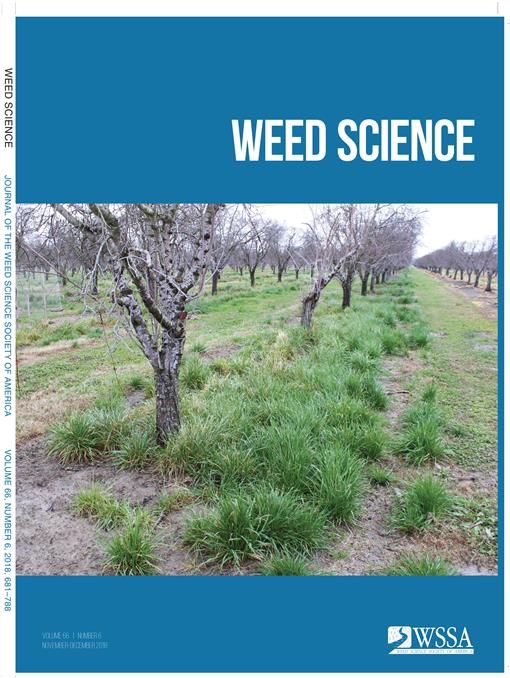Palmer amaranth (Amaranthus palmeri S. Watson), a dioecious summer annual species, is one of the most troublesome weeds in U.S. cropping systems. The evolution of resistance to protoporphyrinogen oxidase inhibitors in A. palmeri biotypes is a major cause of concern to soybean [Glycine max (L.) Merr.] and cotton (Gossypium hirsutum L.) growers in the midsouthern United States. The objective of this study was to confirm and characterize the non–target site mechanism in a fomesafen-resistant accession from Randolph County, AR (RCA). A dose–response assay was conducted to assess the level of fomesafen resistance, and based on the GR50 values, the RCA accession was 18-fold more resistant to fomesafen than a susceptible (S) biotype. A TaqMan allelic discrimination assay and sequencing of the targetsite genes PPX2 and PPX1 revealed no known or novel target-site mutations. An SYBR Green assay indicated no difference in PPX2 gene expression between the RCA and S biotypes. To test whether fomesafen resistance is metabolic in nature, the RCA and the S biotypes were treated with different cytochrome P450 (amitrole, piperonyl butoxide [PBO], malathion) and glutathione S-transferase (GST) (4-chloro-7-nitrobenzofurazan [NBD-Cl]) inhibitors, either alone or in combination with fomesafen. Malathion followed by (fb) fomesafen in RCA showed the greatest reduction in survival (67%) and biomass (86%) compared with fomesafen alone (45% and 66%, respectively) at 2 wk after treatment. Interestingly, NBD-Cl fb fomesafen also resulted in low survival (35%) compared with the fomesafen-only treatment (55%). Applications of malathion or NBD-Cl preceding fomesafen treatment resulted in reversal of fomesafen resistance, indicating the existence of cytochrome P450– and GST-based non–target site mechanisms in the RCA accession. This study confirms the first case of non–target site resistance to fomesafen in A. palmeri.
How to translate text using browser tools
1 November 2018
Confirmation and Characterization of Non–Target Site Resistance to Fomesafen in Palmer Amaranth (Amaranthus palmeri)
Vijay K. Varanasi,
Chad Brabham,
Jason K. Norsworthy
ACCESS THE FULL ARTICLE

Weed Science
Vol. 66 • No. 6
November-December 2018
Vol. 66 • No. 6
November-December 2018
cytochrome P450
fomesafen
glutathione S-transferase
GST
PPX1
PPX2
protoporphyrinogen oxidase




